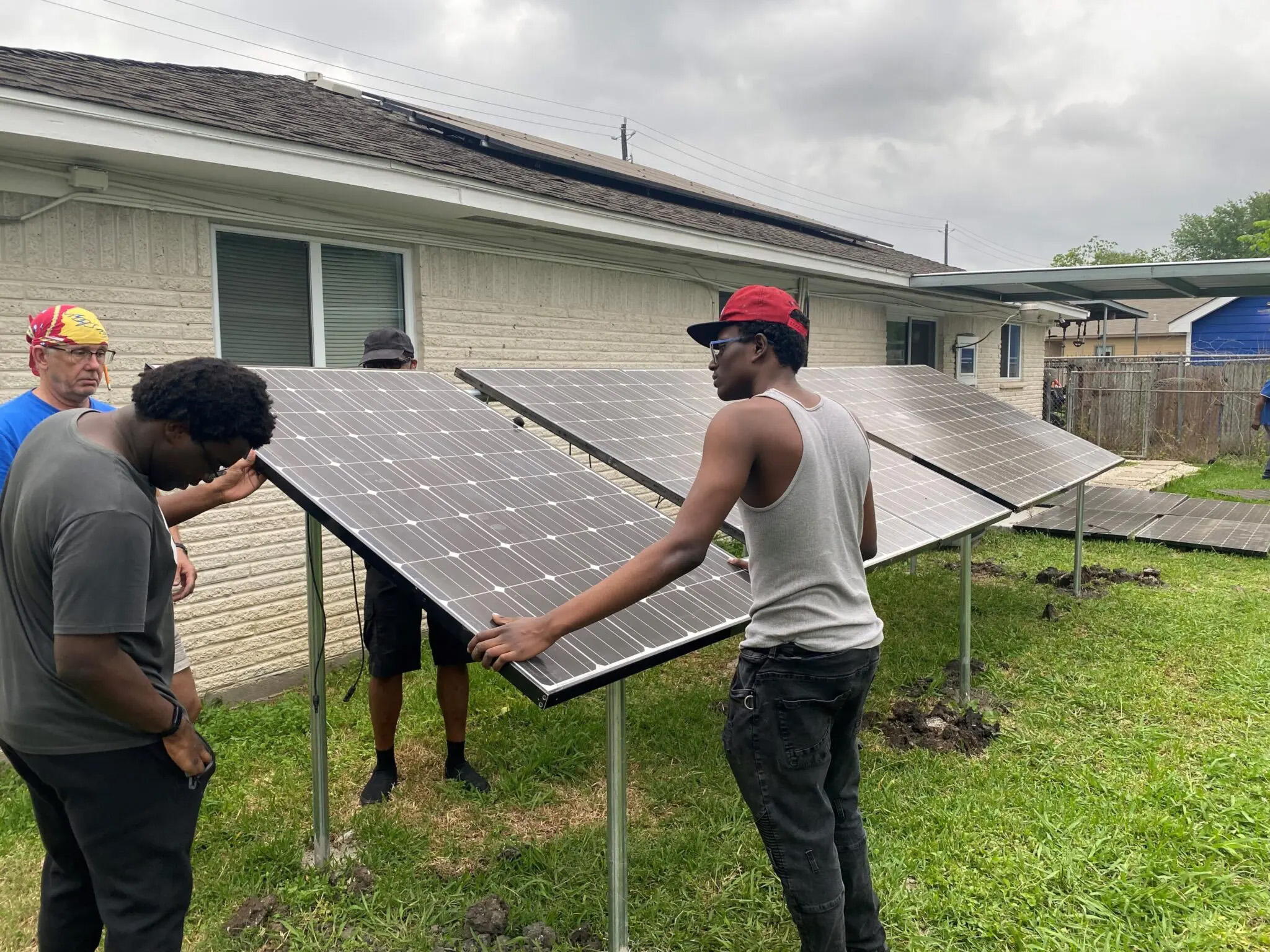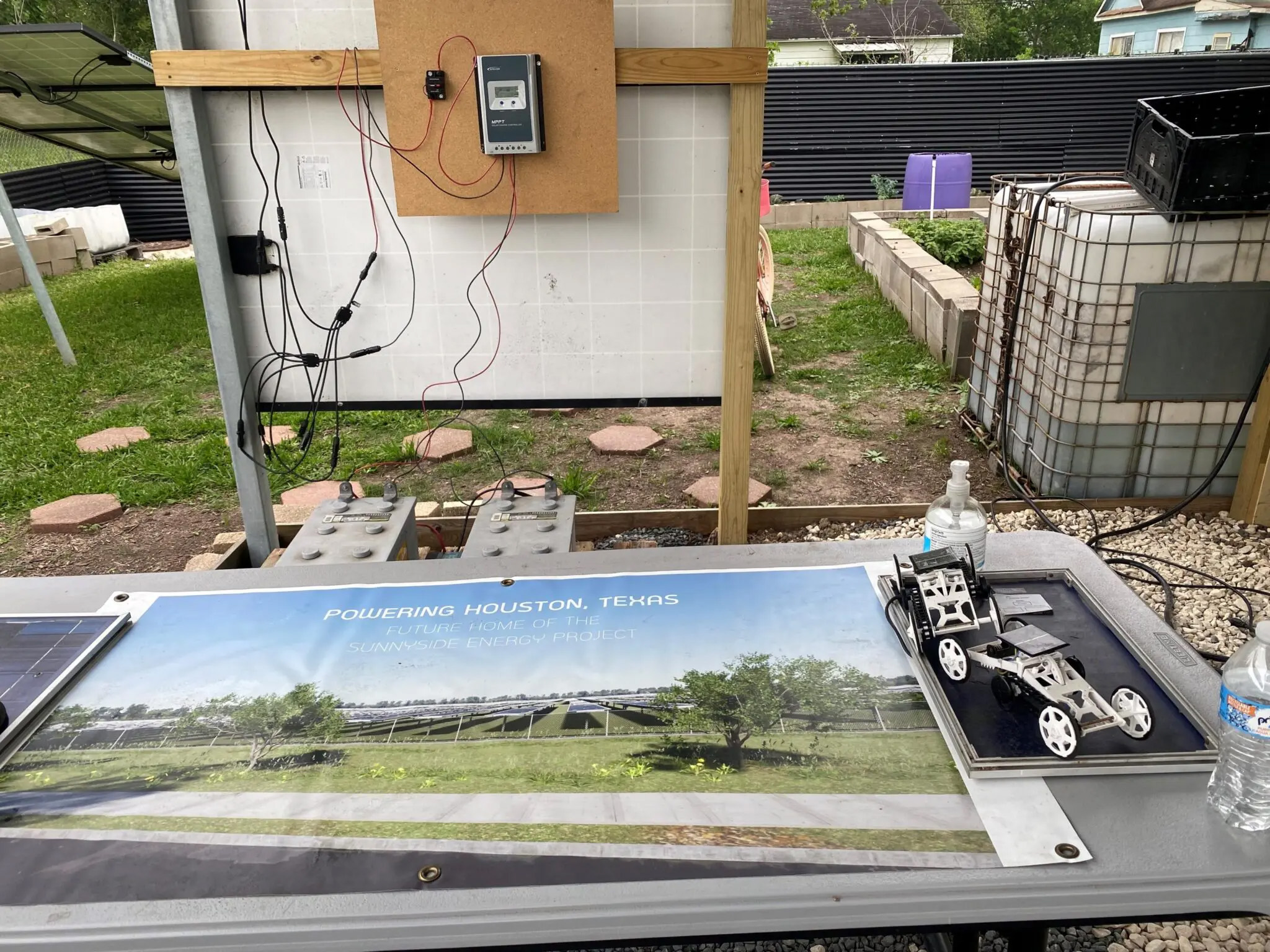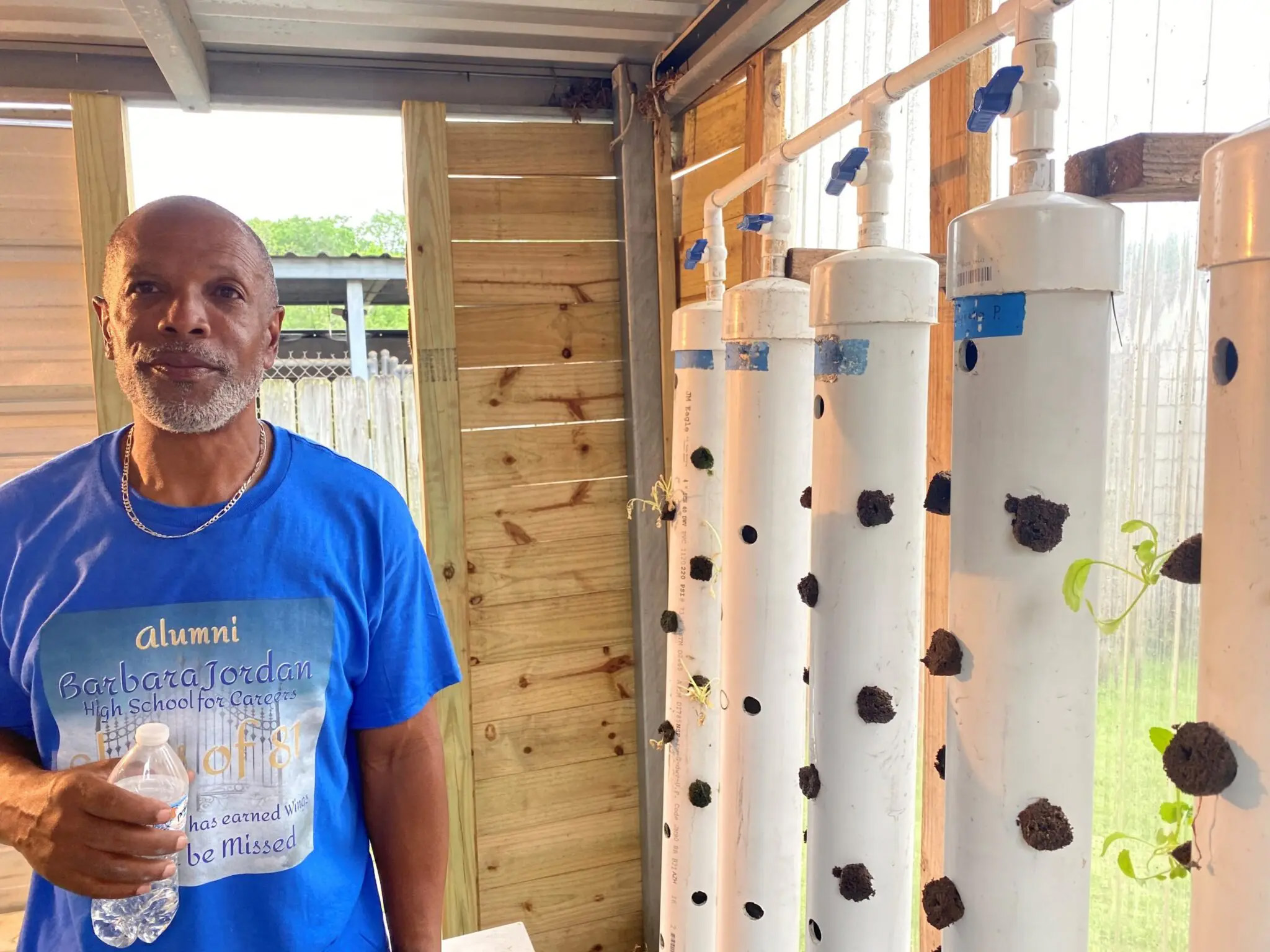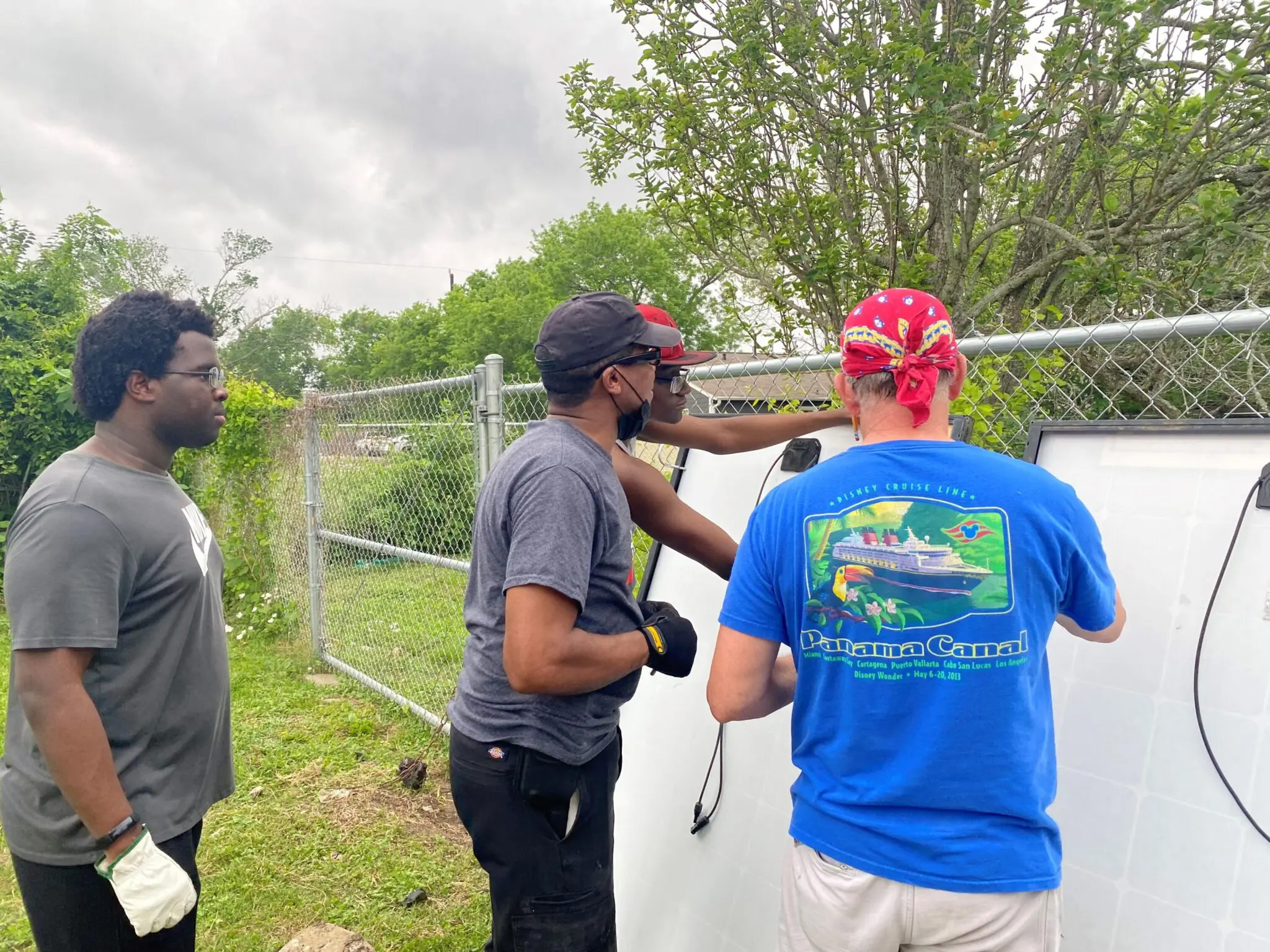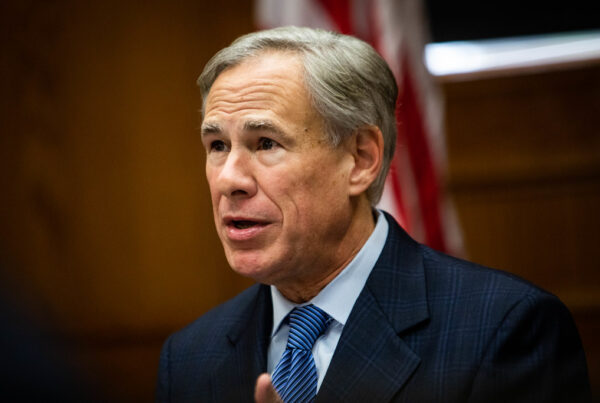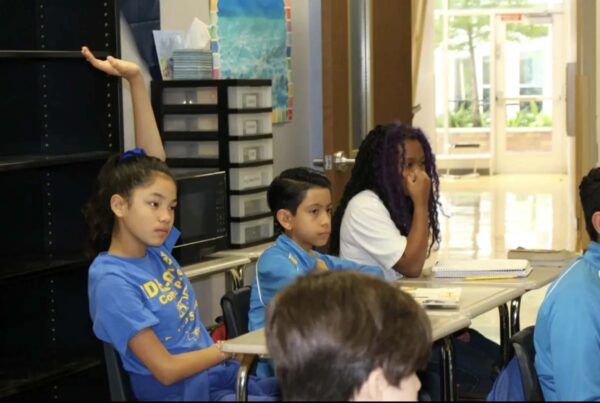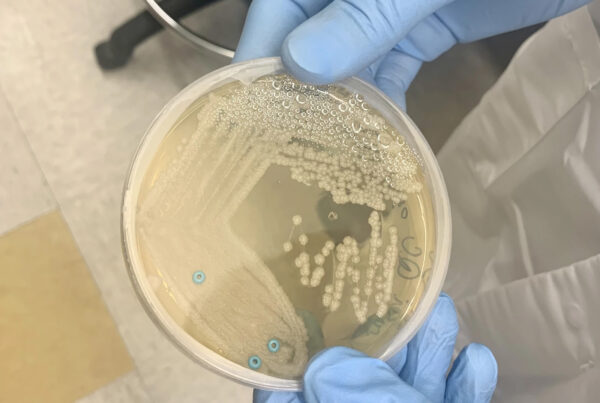On a recent Tuesday evening, Efrem Jernigan helps a group of students, ranging in age from 17 to 56, install an array of solar panels in a Sunnyside backyard.
“They drew up the design,” said Jernigan, who’s the head of the South Union Community Development Corporation. “We taught them what pipe they needed, how much the pipe costs – everything. And so this is the hands-on component to where once you learn it and then put your fingers on it, most people get it.”
Jernigan grew up in Sunnyside and is part of the team that pitched the project to the city of Houston to turn a vacant 240-acre former landfill into a solar farm. When complete, it will produce enough energy to power some 5,500 homes.
In addition to a utility-scale farm, there will also be a community solar array and a program to help lower electricity bills for low-income residents.
The project is expected to break ground later this summer, and when it does, Jernigan wants to make sure the jobs go to local residents. The low-income, mostly Black neighborhood has historically had the highest unemployment rate in Houston, according to Census data.
“We want the economics of what’s getting ready to happen with the solar farm to stay in the community,” he said. “If people in the community are trained and they acquire those jobs, we call that sunshine.”


